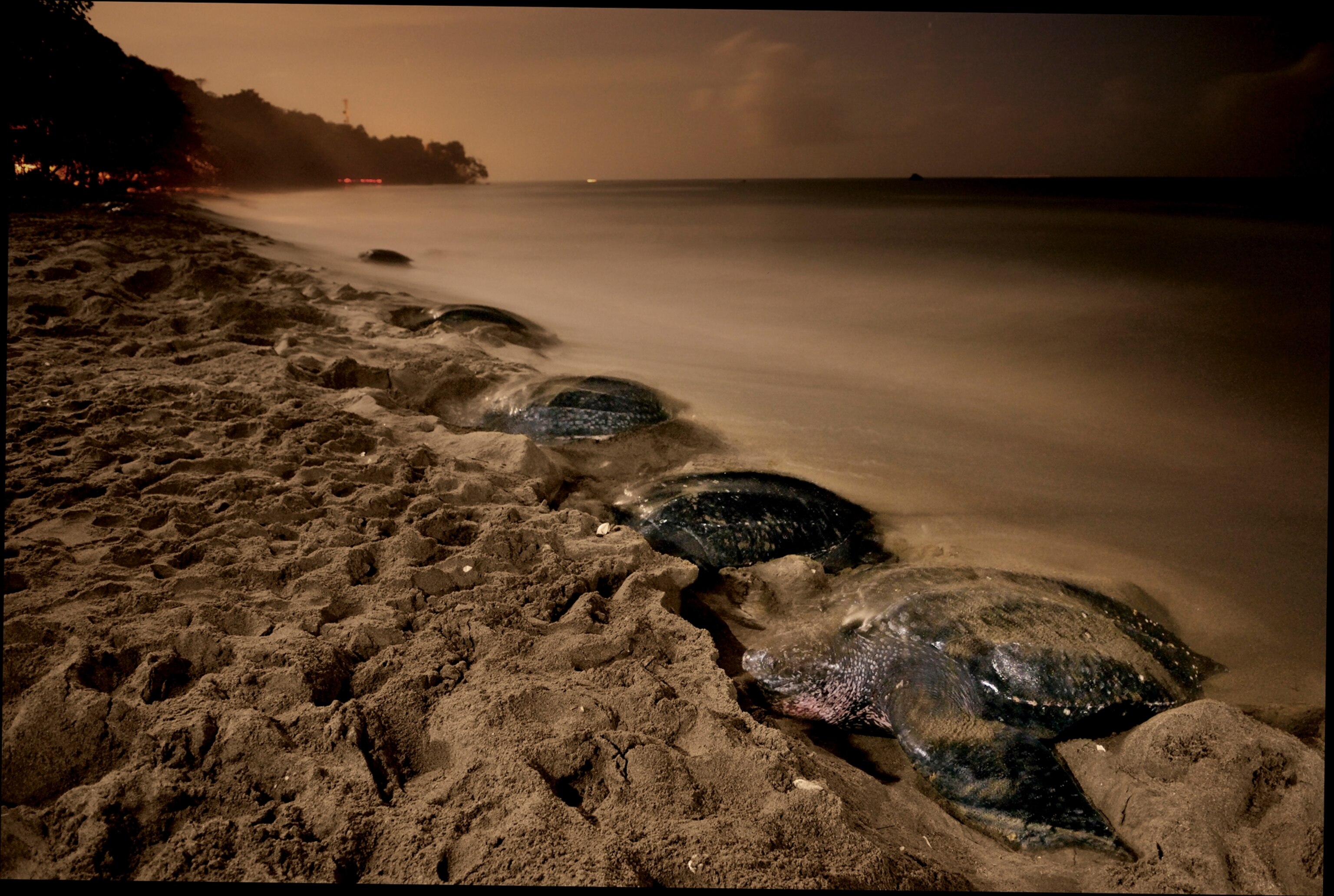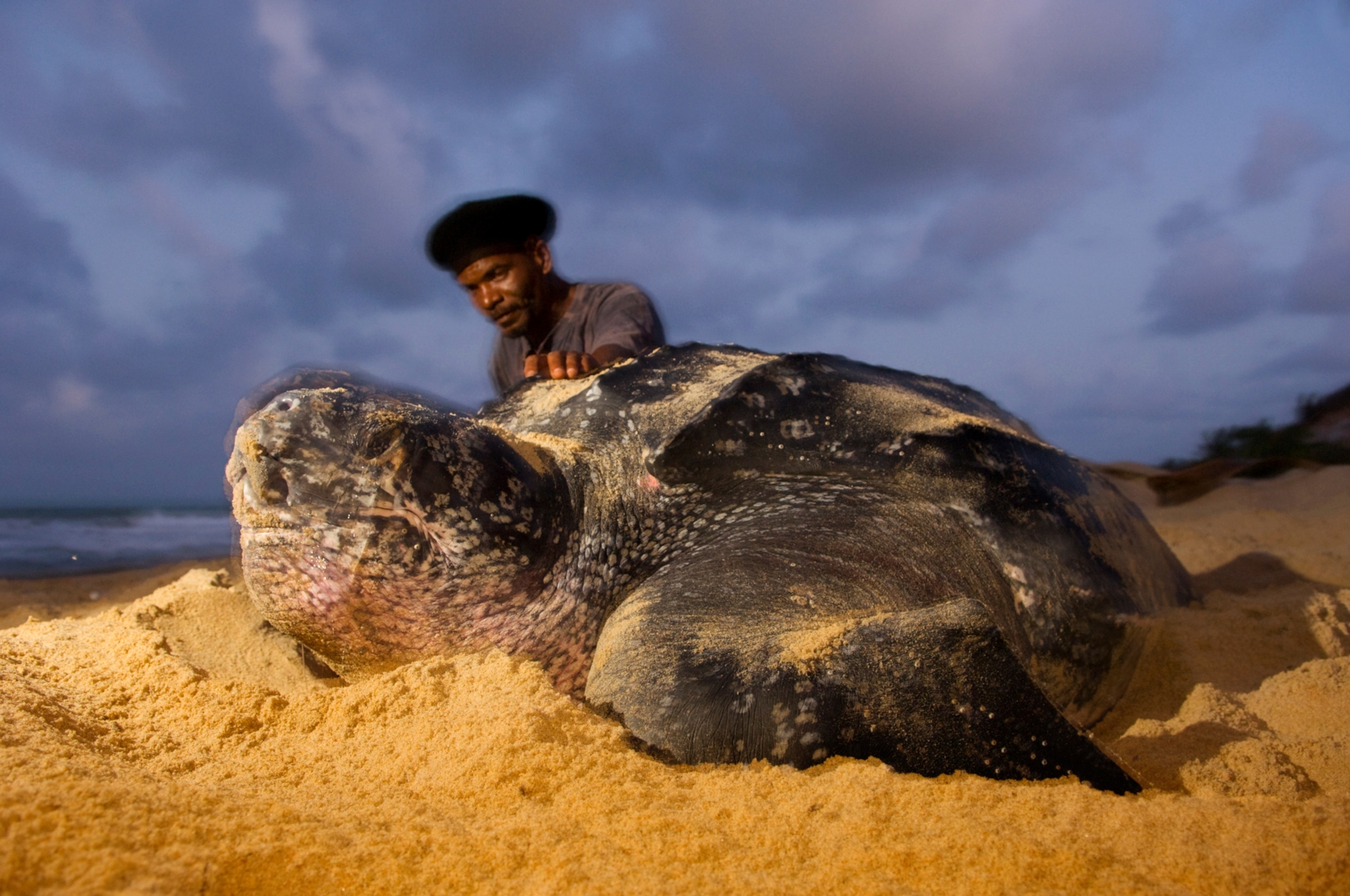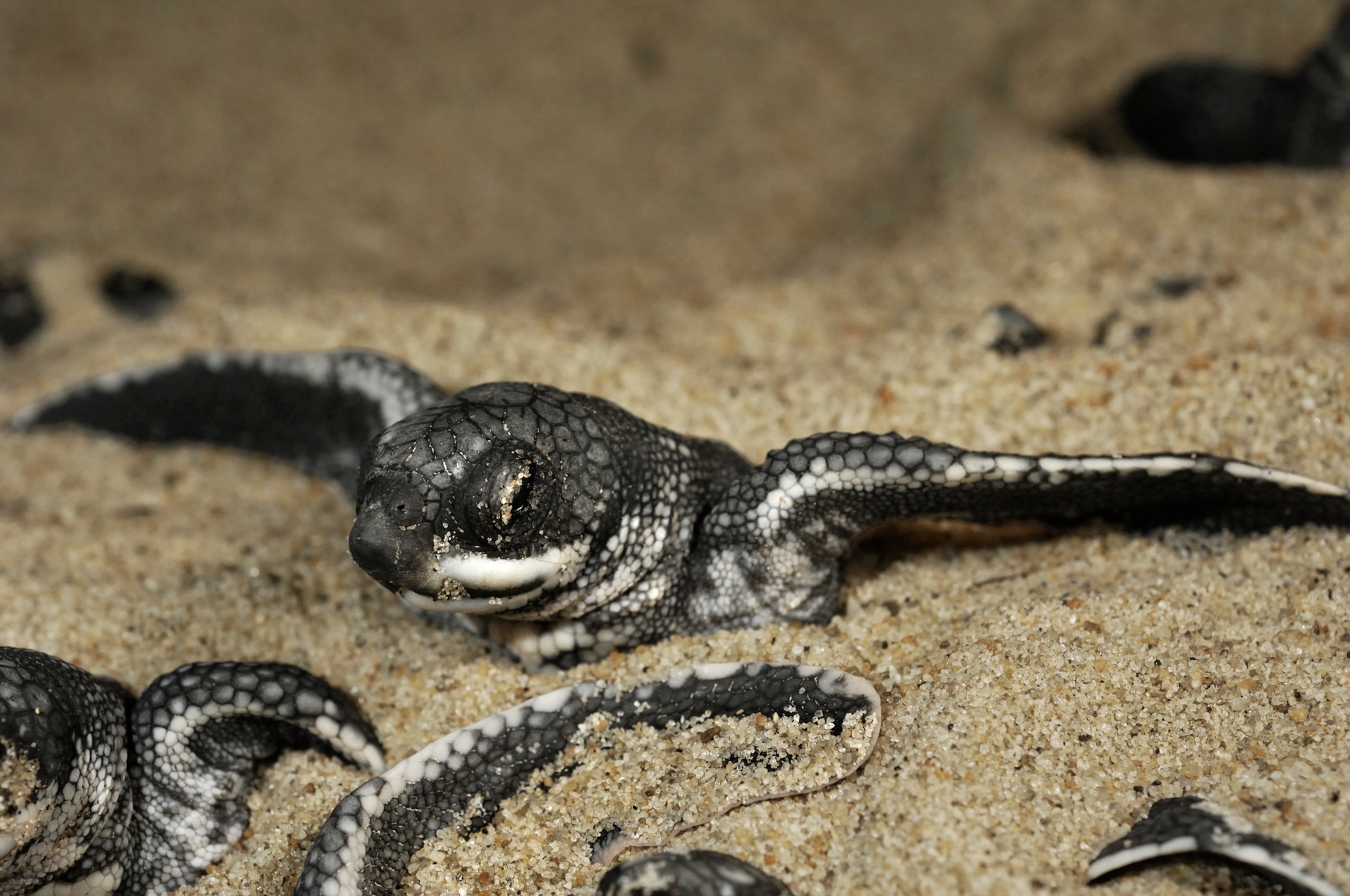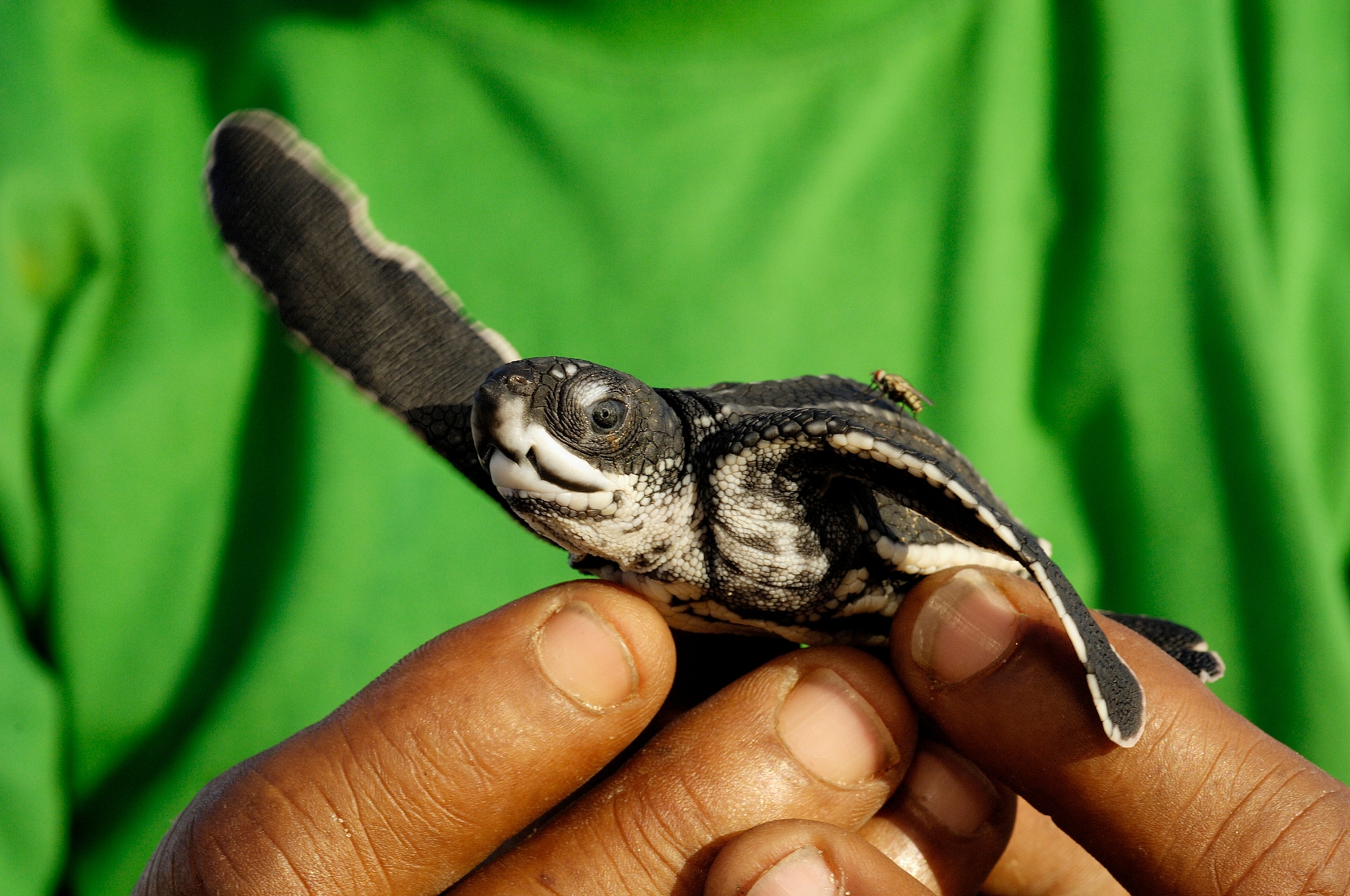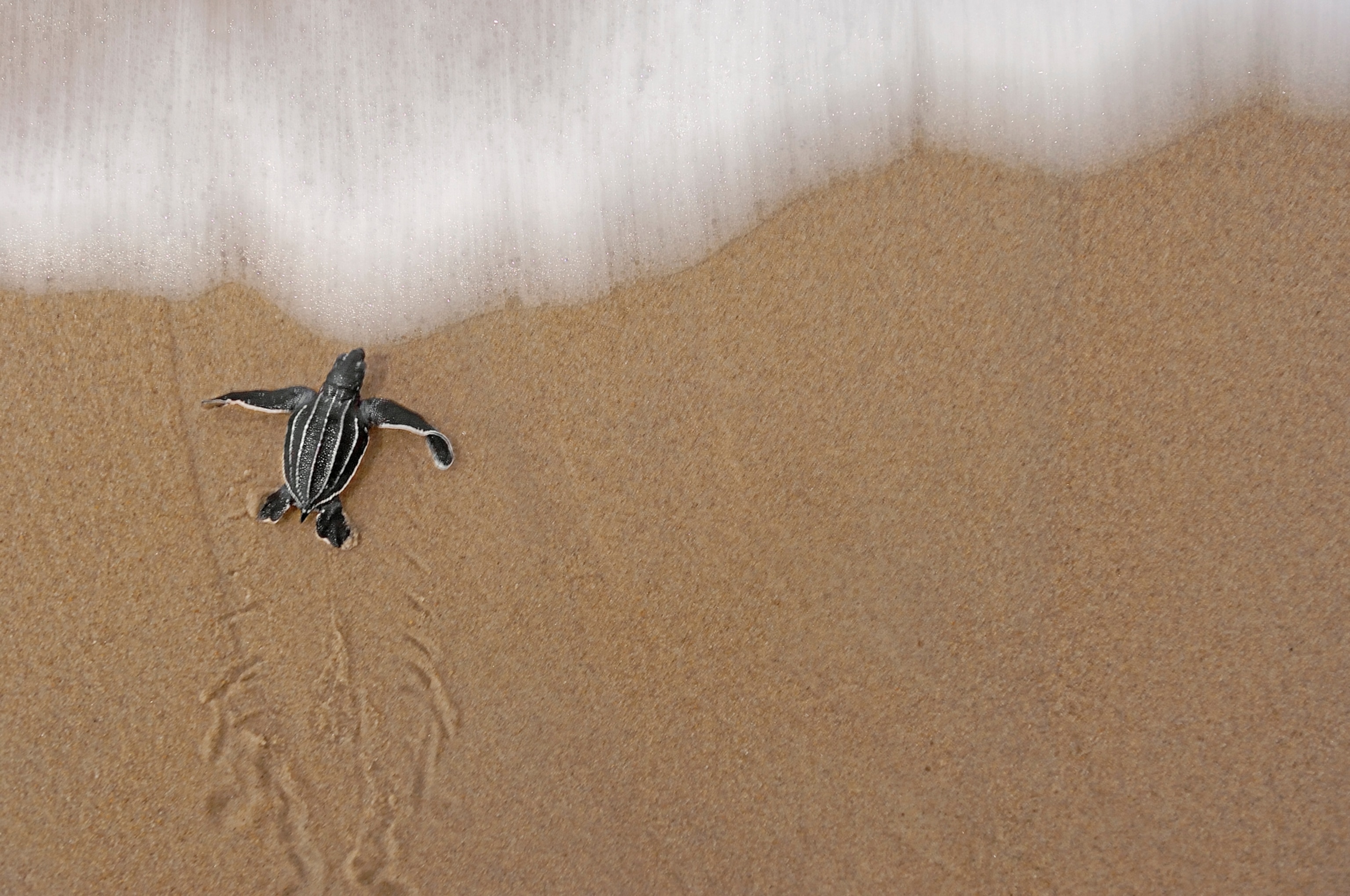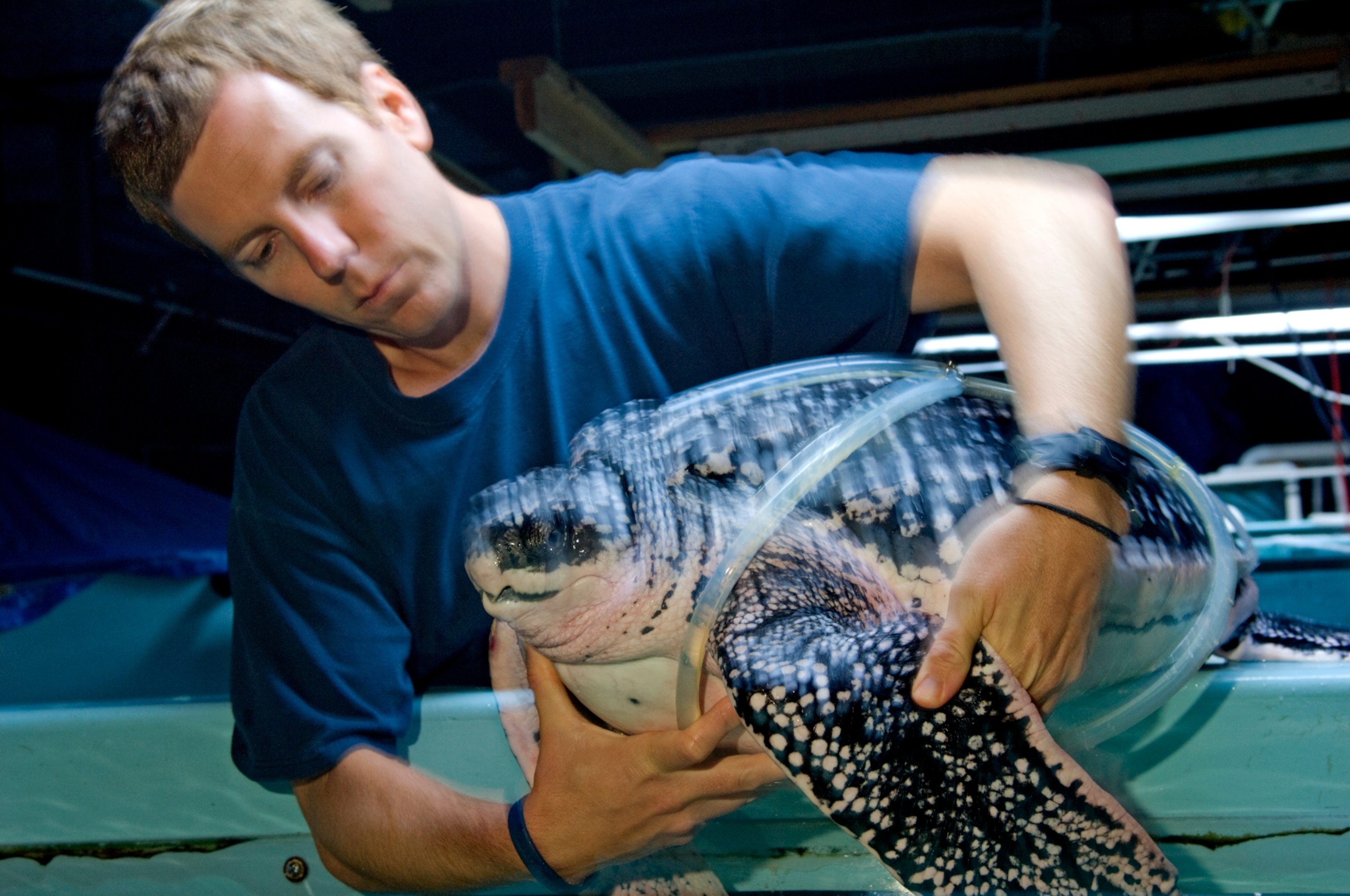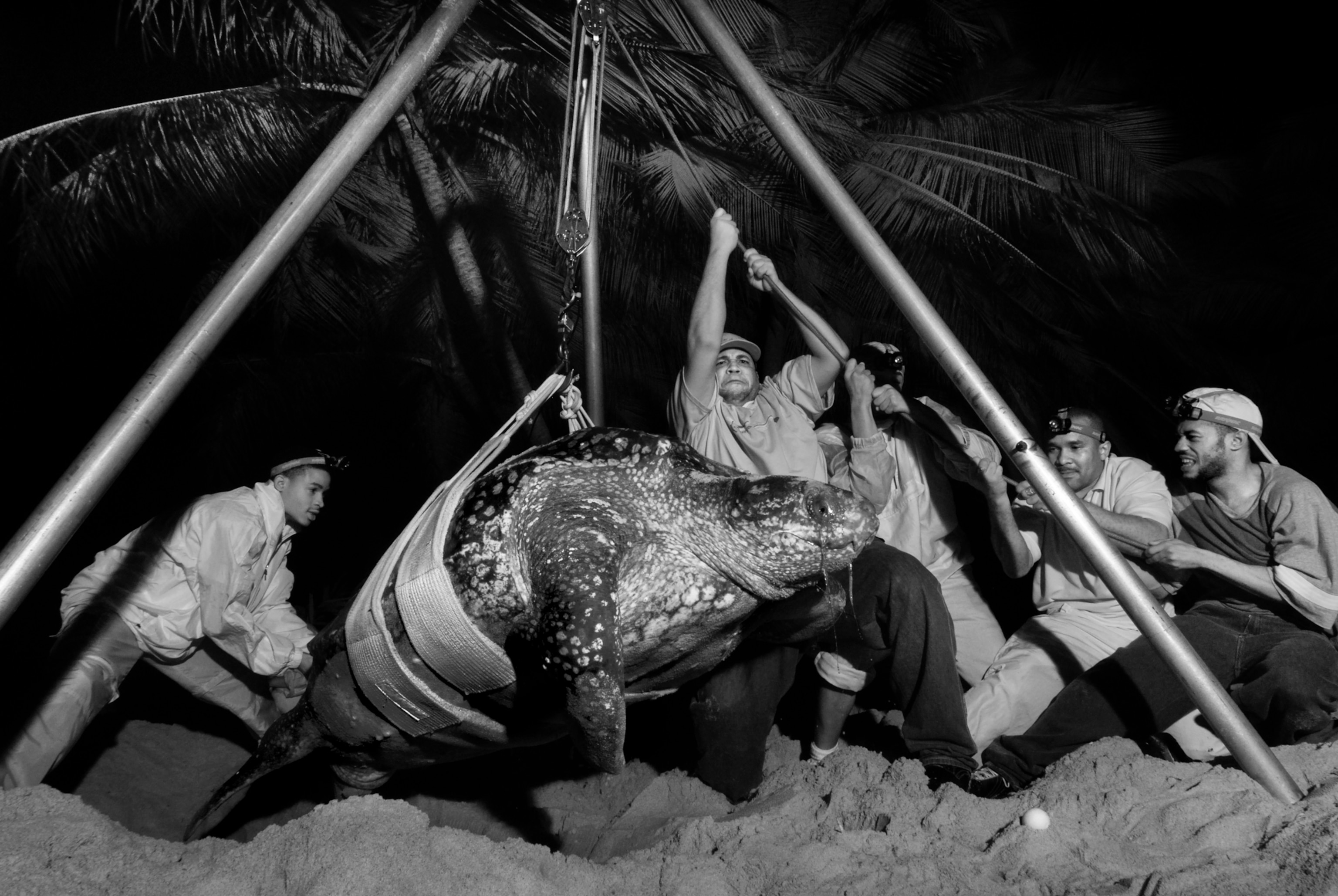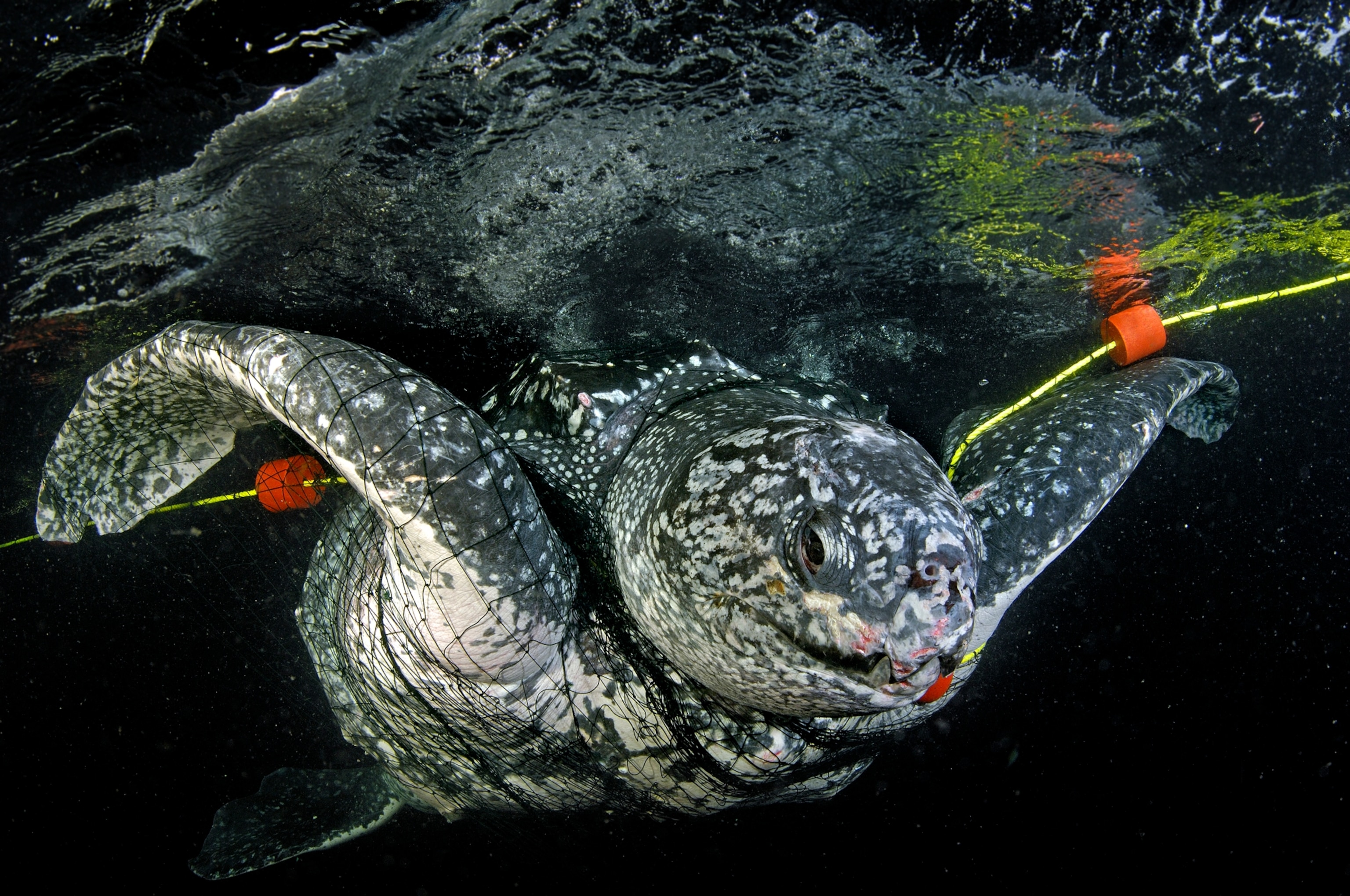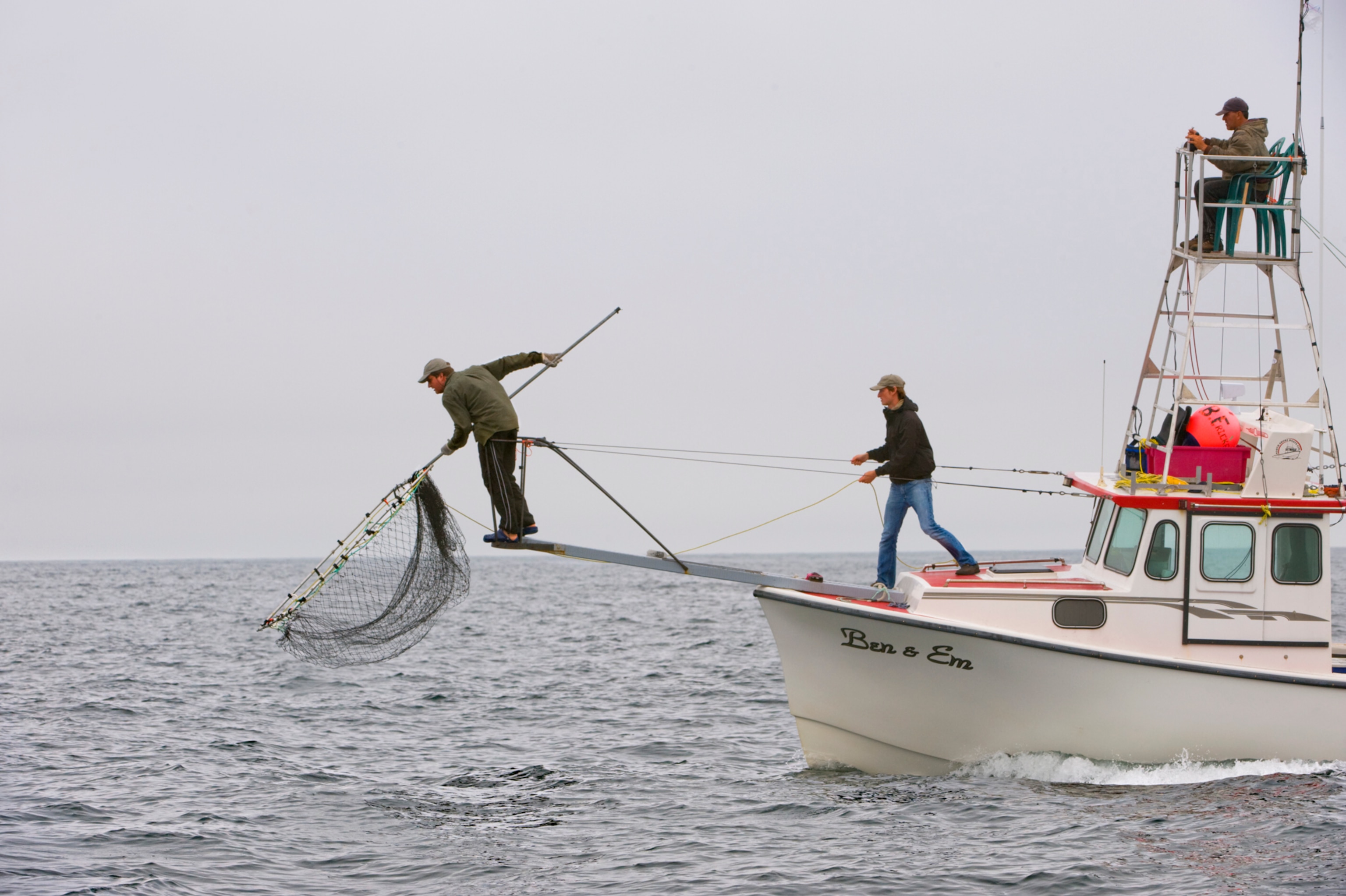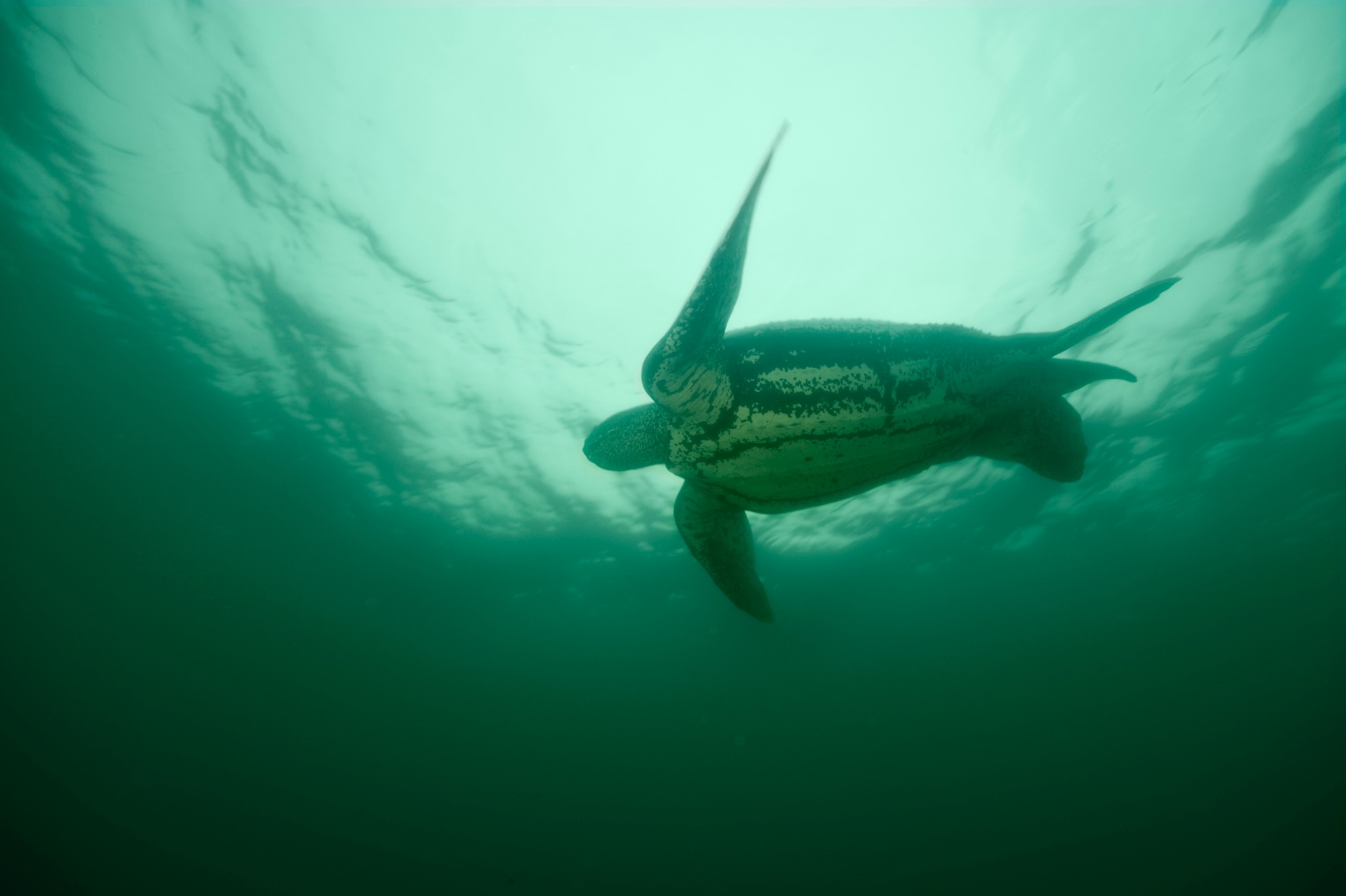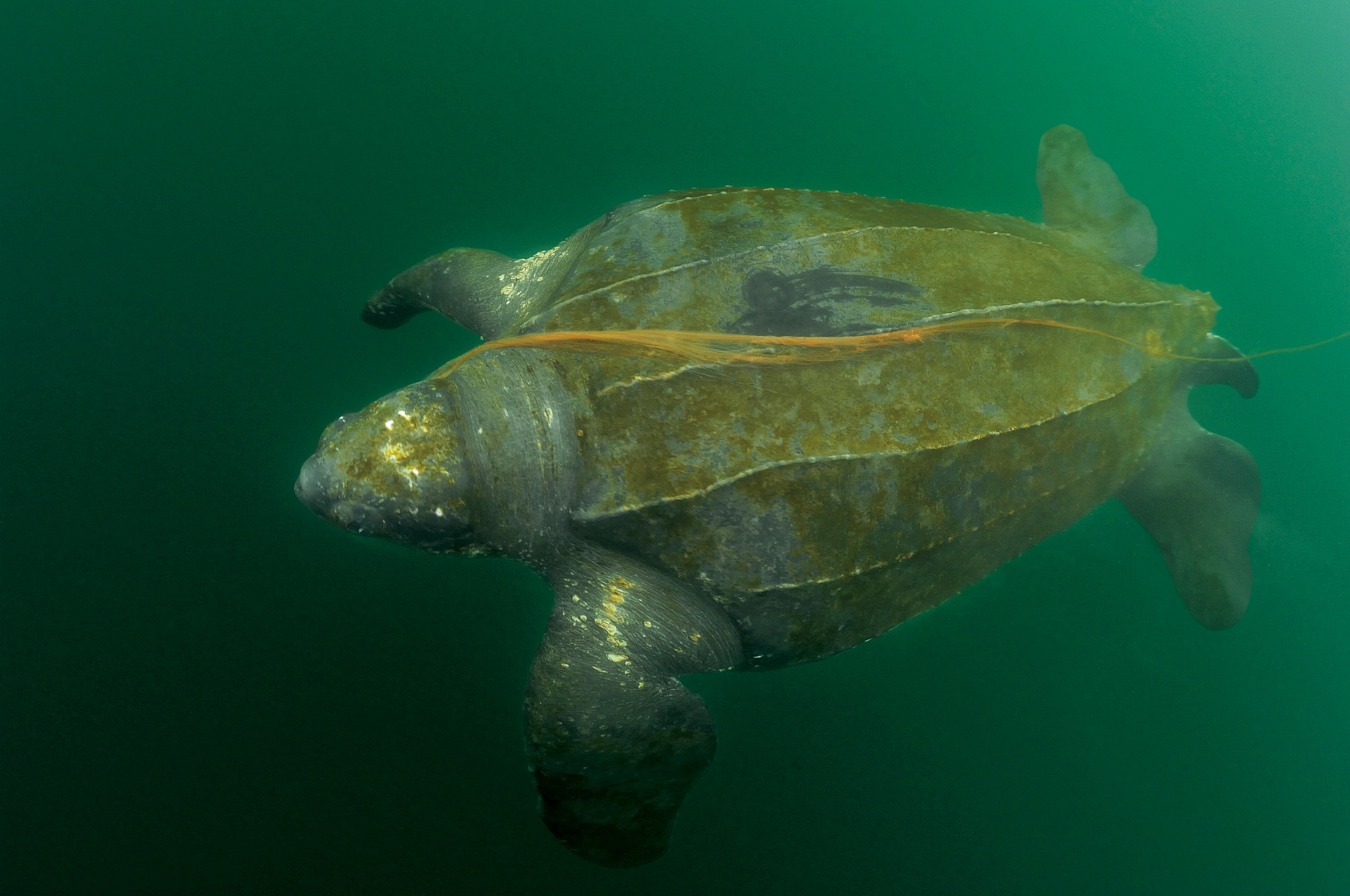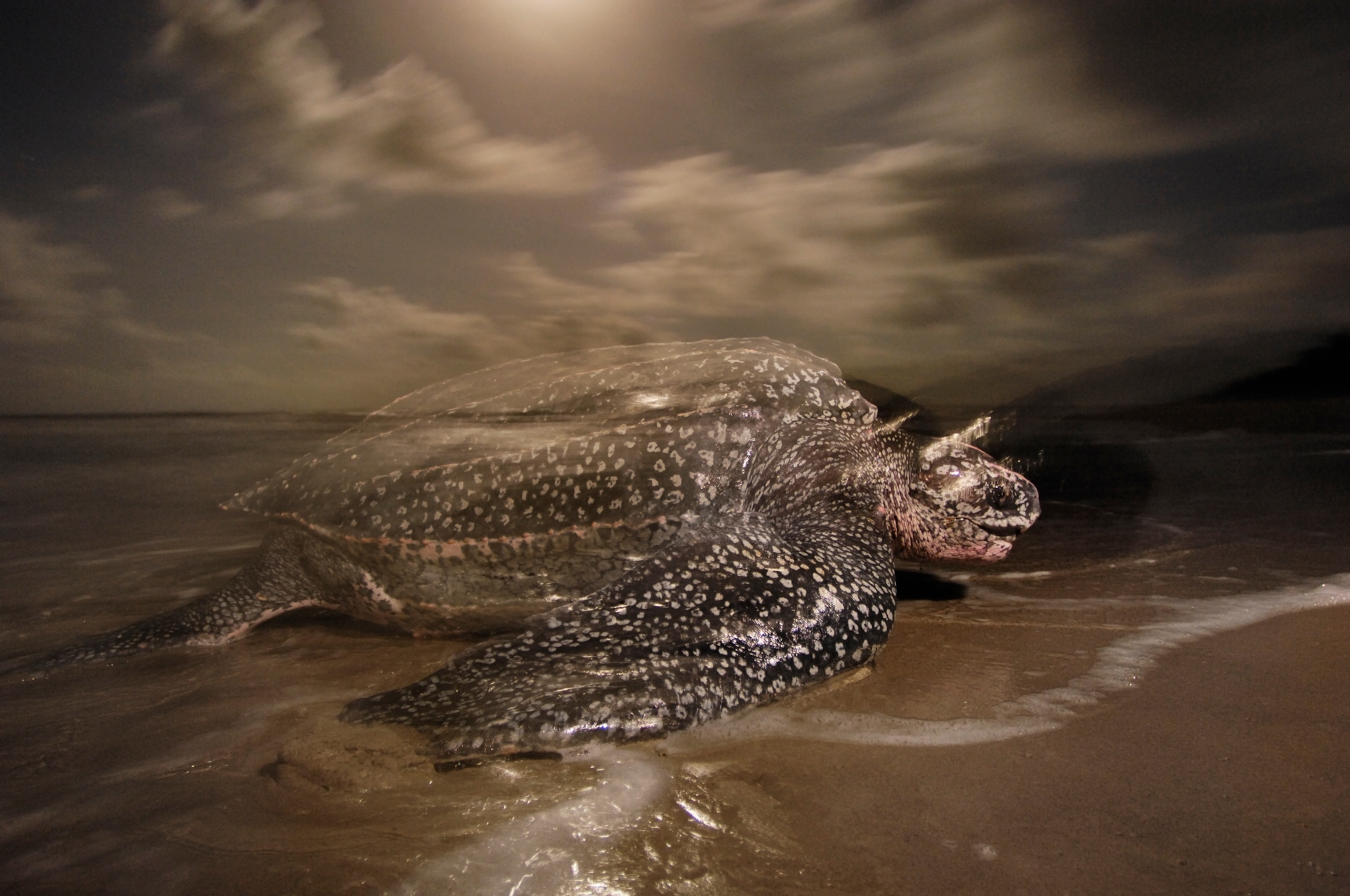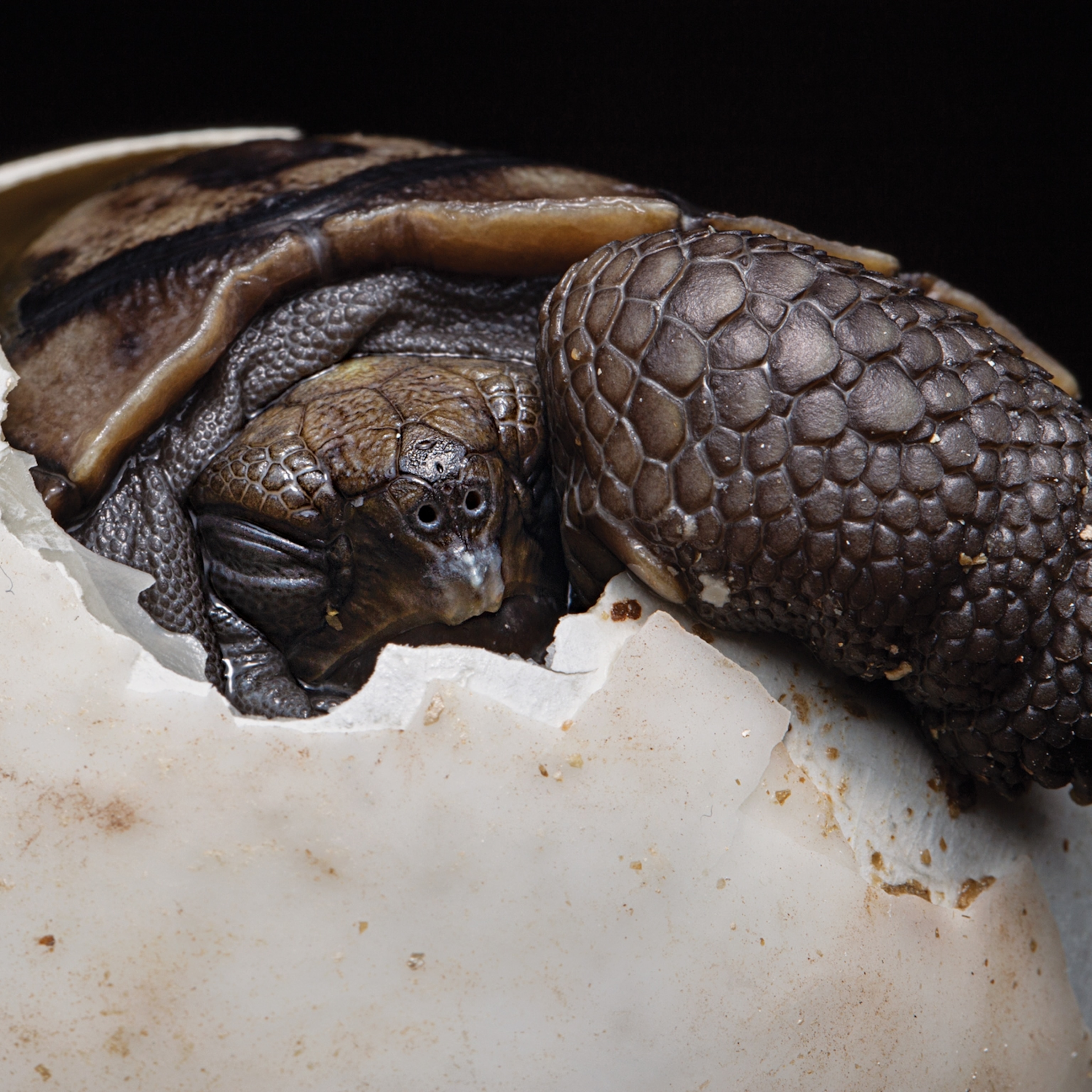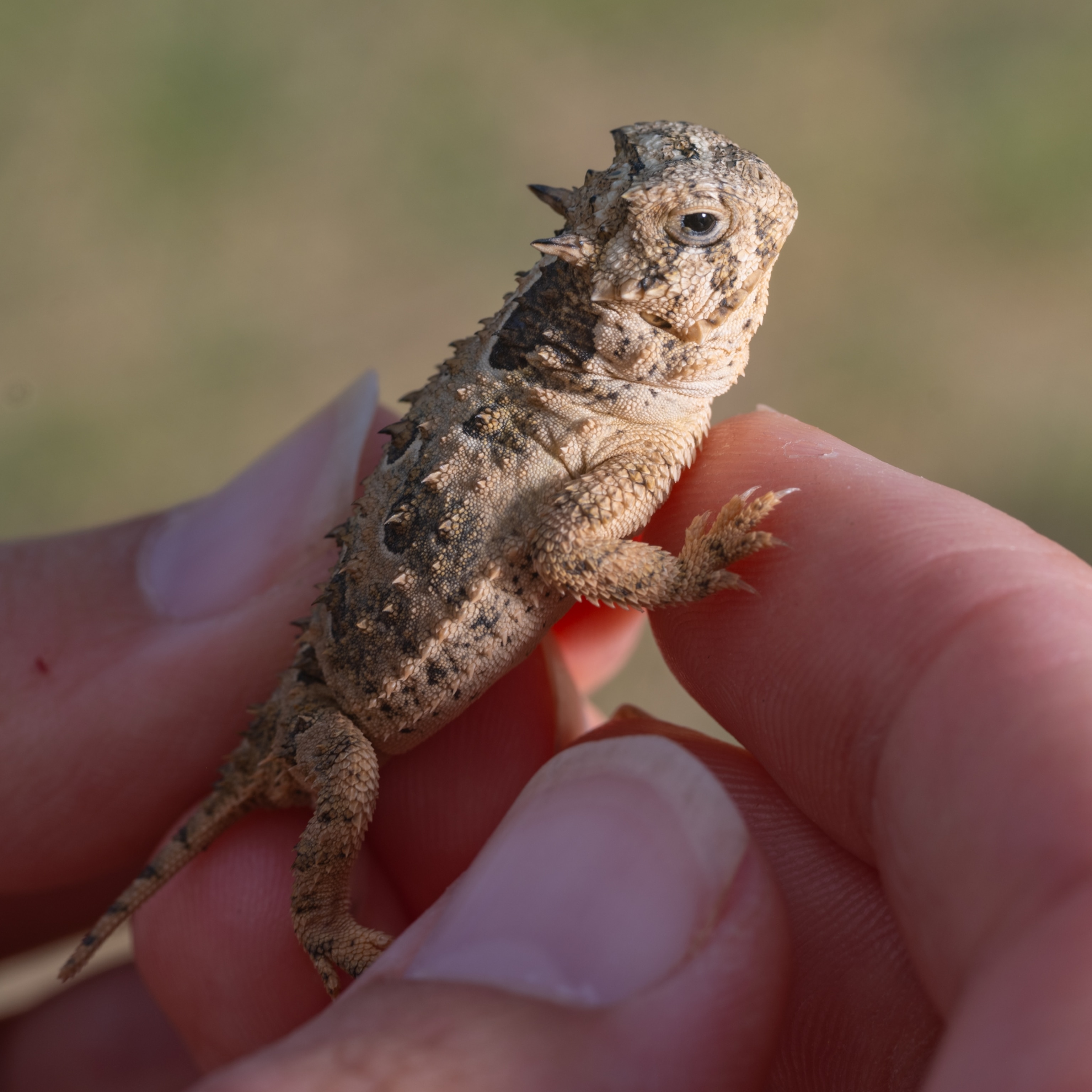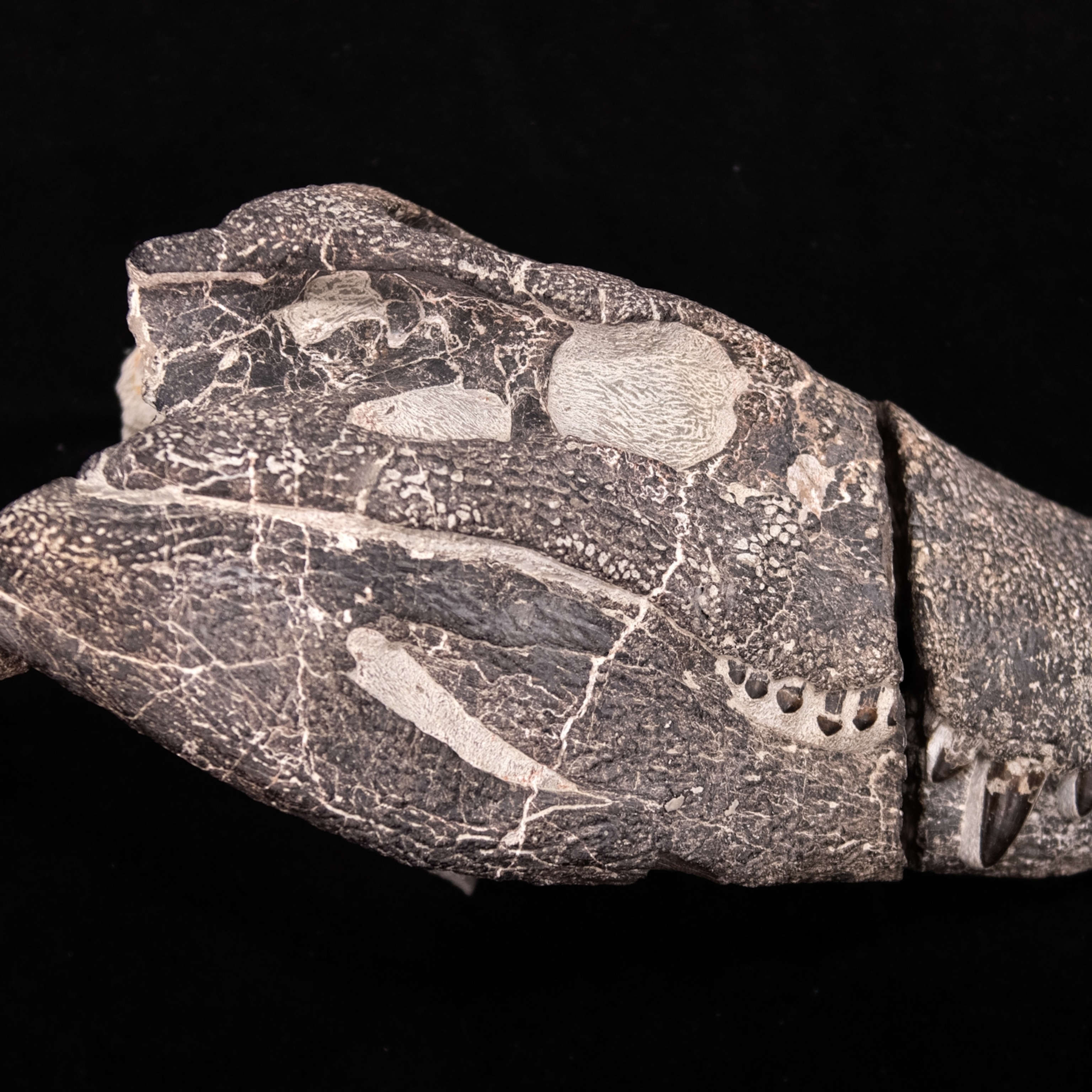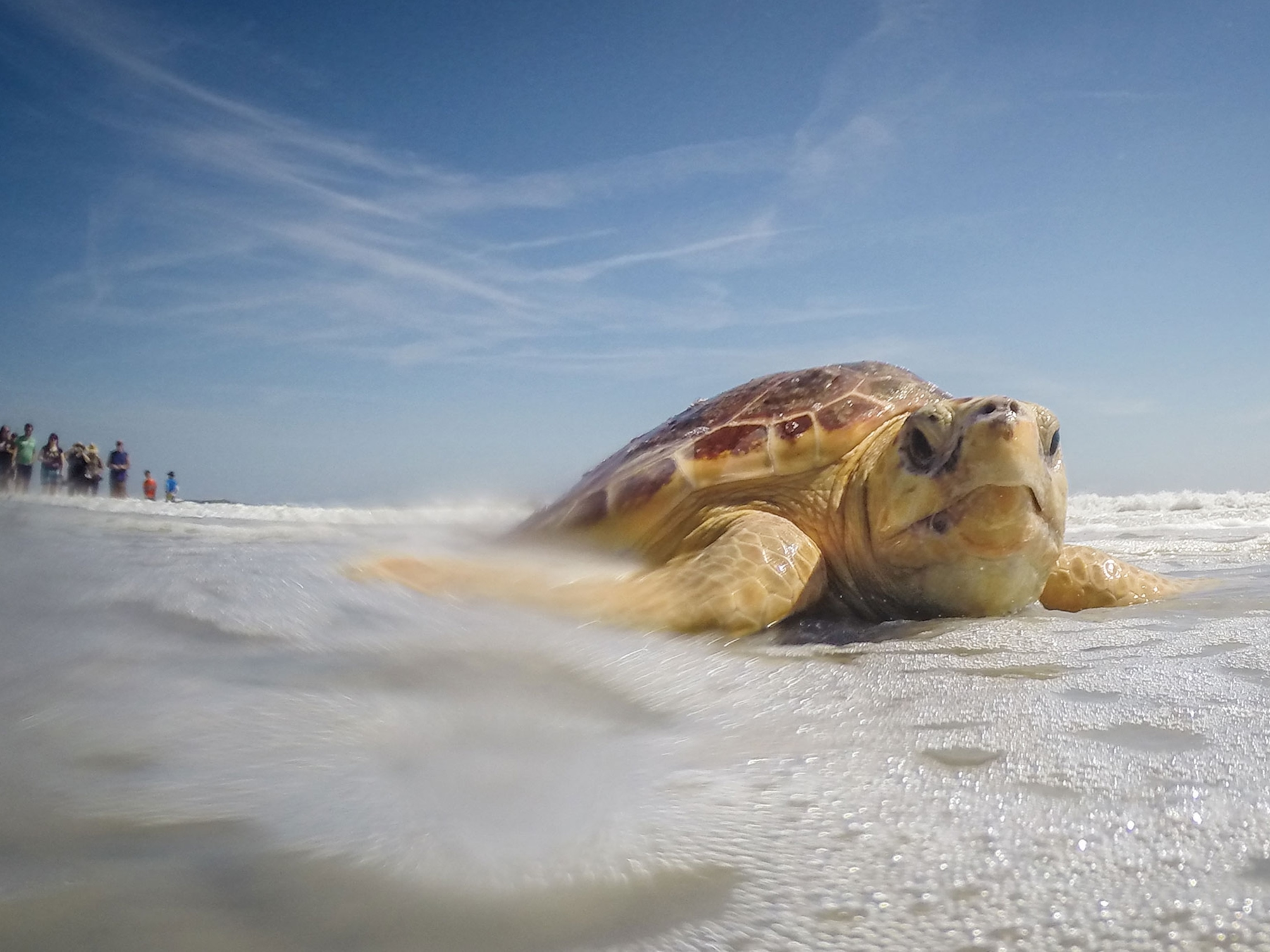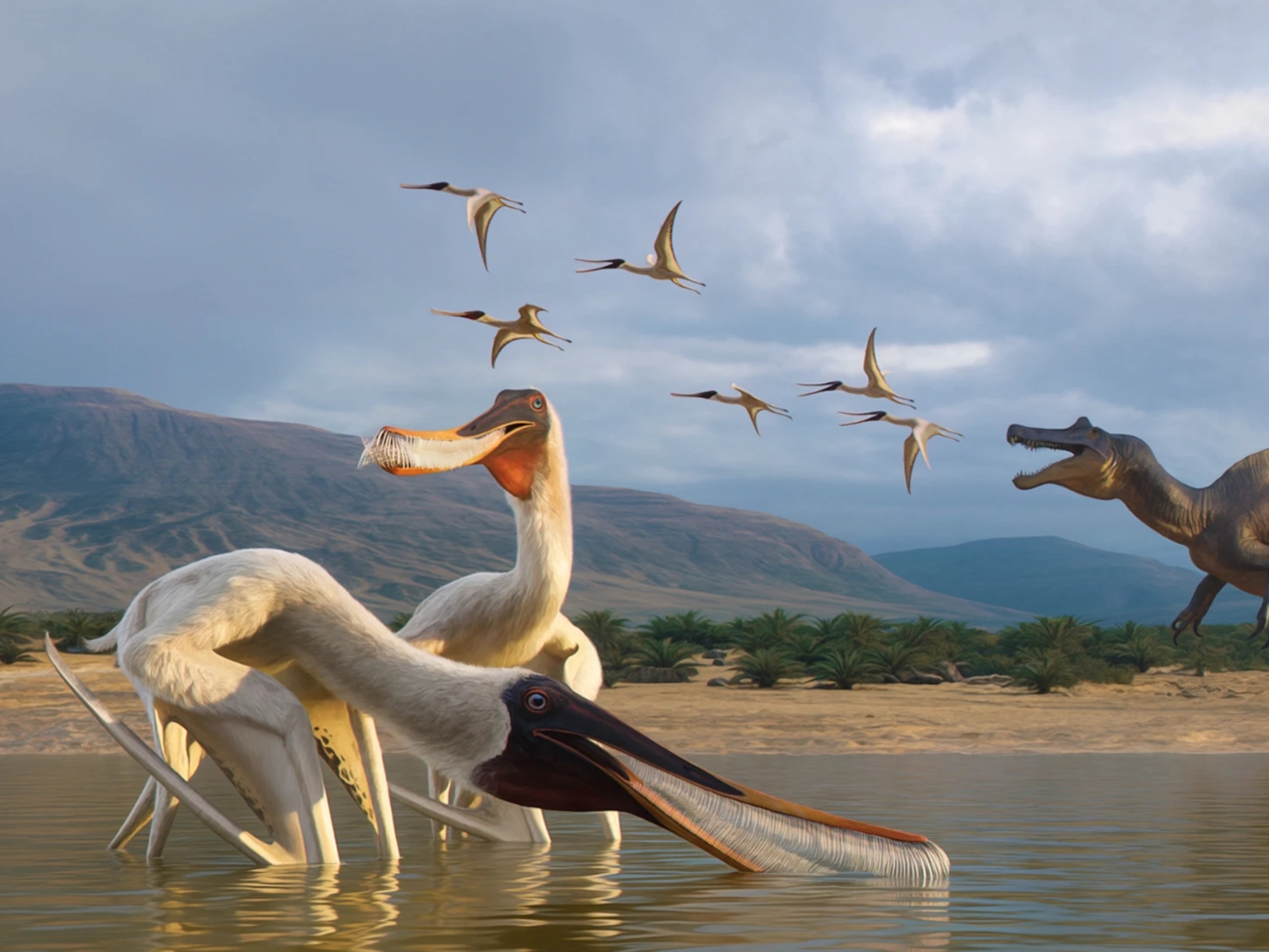Ancient Mariner
The biggest, deepest-diving, widest-ranging of all turtles, the leatherback has endured for 100 million years.
One late summer day in 1961 a biologist named Sherman Bleakney got a telephone call about a strange sea creature that fishermen had just unloaded on a wharf in Halifax, Nova Scotia. Bleakney, who lived nearby, was captivated by what he found there. Sprawled on its back amid a curious crowd was an immense black sea turtle tipping the scales at 900 pounds, with a soft, rubbery carapace, winglike front flippers, and a massive, conical head like an artillery shell. Bleakney recognized it as a leatherback, the biggest of all sea turtles. Leatherbacks, he recalled, were supposed to be creatures of the tropics, as out of place in chilly, gray Canadian waters as parrots in a Halifax park.
(Watch: Sea Turtle Snacks on Jellyfish Tentacles)
When Bleakney began asking around, though, he learned that fishermen saw leatherbacks swimming in the waters off Maritime Canada regularly enough to call late summer “turtle season.” The conclusion was inescapable, he wrote in 1965. “Evidently there is an annual invasion of our cool Atlantic coastal waters by turtles of tropical origin.” Their southern roots were obvious from the few dead turtles he examined. One had a twig from a tropical mangrove tree stuck in its eye; others carried warm-water barnacles. Yet the leatherbacks were surviving, even flourishing, at temperatures that would kill other sea turtles. Stranger still was what he found inside them: Their huge stomachs contained masses of chewed-up jellyfish, stinging tentacles and all, and their gullets were lined with three-inch spines, angled inward to hold in all that slippery prey.
Bleakney eventually moved on to other studies—sea slugs were a special passion of his—but he never stopped marveling at the great beasts he had encountered on the fishing piers of Nova Scotia. "It was mind-boggling," he recalled in a recent interview with Canadian conservationists. "A reptile of that size, that lives in ice water, that can thrive on jellyfish." Almost 50 years later, scientists are still astonished at the leatherback's physical prowess, though today wonder is alloyed with a more modern sentiment: fear that even before we fully understand the leatherback and its epic life story, our own activities may be driving it to extinction.
Over the past 25 years, researchers counting the leatherbacks that crawl out to nest on tropical and subtropical beaches have sounded the alarm as the numbers plummeted: from tens or even hundreds of thousands of turtles on the Pacific beaches of Mexico and Central America to a few hundred today; from thousands in Malaysia to a handful. The International Union for the Conservation of Nature lists leatherbacks as critically endangered, and to list the many ways they die is to despair: tangled and drowned in fishing gear, choked on drifting plastic bags, struck by ships, slaughtered for meat, doomed even before they can hatch when nests are dug up and the eggs sold as food or aphrodisiacs. The leatherback lineage goes back a hundred million years—"it was on the beaches when T. rex was the primary predator," says Scott Eckert of the Wider Caribbean Sea Turtle Conservation Network at Duke University. Now, in some parts of its range, it is at the end of the line.
Spend time with researchers like Eckert, though, and you'll begin to see this turtle as a survivor. The leatherback can dive nearly a mile, swim across oceans, and keep itself warm in water close to freezing. It survives on a diet that few other creatures can stomach. And, most important, it keeps its options open. Other sea turtles are faithful to specific nesting beaches and feeding grounds, which makes them especially vulnerable as human pressures increase. But the leatherback can be more of an opportunist, exploiting favorable conditions—undeveloped nesting beaches, rich blooms of jellyfish—as it finds them. "These turtles treat the entire ocean as their pond," says Jeanette Wyneken, a biologist at Florida Atlantic University. The result is that, in some regions, leatherback populations are actually on the rise.
Springtime on Matura Beach, six miles of palm-fringed, surf-washed sand on the east coast of Trinidad. By day the beach looks as if giant dune buggies have romped across it. Chevron-pattern tracks five feet wide twist over the sand, interrupted by shallow, car-size pits. By night the real earthmovers appear. They advance not with a roar of engines but with a whisper of sand, the thump of bodies heaving forward inch by inch, the sigh and grunt of heavy effort. The leatherbacks are nesting.
Black and gleaming in the moonlight, each female drags herself from the surf, front flippers scoring the sand as she pulls herself along, and settles in to dig. Scooping with her rear flippers, she excavates a shaft; when she can no longer reach the bottom, she begins to lay her eggs, a glistening cue ball every few seconds. Once she has a cache of 80 or so, she fills in the nest, sweeping her front flippers to smooth out the spot. Then she drags herself a few feet away and makes more giant sand angels—a decoy nest that may serve to confuse predators. After two or three hours on the beach, her throat rosy with exertion, she returns to the sea.
Leatherbacks have been nesting on Matura Beach for as long as anyone can remember, even during the bad years of the 1970s and '80s, when the beach reeked from butchered turtle carcasses rotting in the sun and the sand was pocked with holes dug by egg poachers. These days the turtles nest unmolested, their domain patrolled by Nature Seekers, a local conservation group. The number has shot up, from a few hundred nesting each year a decade ago to perhaps 3,000.
Turtles are practically storming the beaches of Trinidad. Last year at Grande Riviere, a beach just a half mile long, 500 leatherbacks a night vied for nesting space, a scrum so dense they dug up each other's nests, leaving a windfall for vultures and stray dogs. Elsewhere on the island, turtles have begun colonizing beaches that were empty just a few years ago. All told, Eckert estimates that 8,000 leatherbacks visited Trinidad to nest last year.
The numbers are all the more remarkable because of the gantlet the turtles run just offshore. Leatherback nesting season is also the time when the hundreds of fishermen in northeast Trinidad set curtains of net a few miles offshore, hoping for a load of mackerel or kingfish. Increasingly, they catch half-ton turtles instead.
The fishermen are no happier about it than Eckert and his colleagues.
At the fishing pier in the small port of Toco, Shazam Mohammed is skinny, shirtless, and furious. He gestures at a heap of green fishnet, tangled and cut. "All those nets are chopped up," he says—slashed to remove leatherbacks that blundered into them the night before. "If we make 200 Trinidad dollars [about 30 U.S. dollars], we have to pay 500 to fix the nets." The turtles, it's safe to assume, did not fare well either. "Damn leatherbacks. I'm not wasting time saving them—if I catch a turtle, I will destroy it."
Eckert and colleagues from the NOAA Fisheries Service, hoping to find a way for nesting leatherbacks and coastal fishermen to coexist, have worked with local people to test modified nets that catch fewer turtles. Meanwhile more and more of the fishermen are looking for other ways to make a living during turtle season. Even so, Eckert and others estimate that a thousand or more leatherbacks die every year off Trinidad, drowned in nets or hacked out of them by desperate fishermen.
And yet the tide of nesting leatherbacks keeps rising, not just in Trinidad but around the Caribbean—in St. Croix, along the northern coast of South America, even in Florida.
Stopping the slaughter on nesting beaches, as Nature Seekers and other organizations have done, must have helped, says Eckert. "But I'd be hesitant to say there's a direct link between conservation and the kind of increase we're seeing." It's too early, he thinks, for the biggest benefit of beach patrols—saving countless eggs from being harvested and sold—to be paying off. No one is sure how long it takes leatherbacks to mature. But recent research, based on growth layers in tiny bones that encircle the pupil of the leatherback eye, suggests it could take 30 years, which would mean that the hatchlings saved over the past few years can't be contributing yet to the surge of turtles hitting the beaches.
Thousands of miles from the warm sands of Trinidad, something else seems to be going very right for the leatherbacks of the Atlantic.
Leatherbacks are built to travel. On the beach they look as out of place as a submarine in dry dock, but in the water "they are the most graceful creatures you've ever seen," says Scott Eckert. "This is one of the finest hydrodynamically designed animals on the planet. They can probably swim as easily as rest."
Unlike the massive, overhanging shell of other sea turtles, the leatherback's flexible, formfitting carapace merges almost seamlessly with its thick neck and muscular shoulders. Seven ridges run the length of the shell—adaptations, perhaps, for smoothing and directing the flow of water. The turtle's head is a prow; the carapace tapers toward the back like a teardrop.
The leatherback also propels itself with an efficiency no other sea turtle can match. All sea turtles can fly through the water by flapping their flippers vertically, generating thrust on both the upstroke and the down. But while other species sometimes shift to a less efficient paddling motion, the leatherback uses its longer flippers exclusively as wings. "It's almost pure underwater flight," says Jeanette Wyneken, who has analyzed leatherback swimming with high-speed video.
Today, evidence of leatherback migrations comes not from the twigs and barnacles that told their story almost a half century ago but from satellite transmitters attached to the turtles on the nesting beaches or at sea. Satellites have tracked them traveling the length and breadth of the North Atlantic, from the Caribbean up to Canada and across to the Canaries and the Irish Sea. In the Pacific, satellite-tagged turtles have made the longest crossing of all: 6,500 miles between nesting beaches on New Guinea and the coastal waters of Oregon and California.
Their travels often take leatherbacks into water well below 60°F, more hospitable to whales and seals than to sea turtles. But these turtles can shrug off the cold. Rest your hand on a leatherback's meaty shoulder and you will feel a faint but definitely nonreptilian warmth—the product of so-called gigantothermy, a set of features that may keep leatherbacks 12 de-grees F or so warmer than the water they swim in. As the term suggests, part of it is sheer mass: Big animals naturally retain heat. By packing thousand-pound turtles in a thousand pounds of ice (yes, this was an actual experiment, and the animals recovered quickly), researchers found that blood flow to and from the flipper surface shuts down intermittently, keeping body heat in the body core. A thick jacket of fat helps too. Leatherbacks end up with the best of both worlds: a thrifty, slow reptilian metabolism but the ability to function—swim, feed, digest—in cold water, which is where some of the densest concentrations of jellyfish can be found.
Decades after Sherman Bleakney abandoned leatherbacks for sea slugs, a young scientist named Mike James took up where he had left off. In out-of-the-way fishing villages all around Nova Scotia, James introduced himself and tacked up posters asking, "Have you seen this turtle?" in big letters, with a picture of a leatherback and a toll-free number. The very first year, in 1998, fishermen around the province called in 200 sightings.
The next summer, James drove into the small port of Neil's Harbour, on Cape Breton Island at the northern end of Nova Scotia, and knocked on a door belonging to Bert Fricker. Bert was from a fishing family, but the cod stocks had collapsed in the early 1990s. He generally spent the late summer chasing swordfish, but they were disappearing too; a 614-pounder he had harpooned a month earlier turned out to be the last one anyone from Neil's Harbour ever landed. So Bert Fricker and his brother Blair had time to spare for the eager young man with a giant, custom-made hoop net tied to the roof of his car and a request: Take me out on your boat to catch a leatherback, alive. "We kind of thought it was a joke," says Bert, "but it sounded like fun."
Since then, working every summer and early fall with Bert and Blair aboard their two boats, James and his colleagues from the Canadian Sea Turtle Network in Halifax have captured and released several hundred leatherbacks. When they haul in an animal, one of the first things they do is check for a tag—a metal strip crimped onto a rear flipper or a microchip injected into the shoulder by researchers at a distant nesting beach. Over the years, they have logged a veritable UN of origins—northern South America, Central America, Caribbean islands including Trinidad, and Florida. "We are a pooling area for turtles from the western Atlantic," says James.
The leatherbacks make the long journey and endure the chilly water for one reason: to feast. Even from the boat, it's clear that the turtles here are absorbed in eating. When Bert or Blair spots one—scanning the gray chop, they are usually the first to see the swell of a carapace or the black knob of the head—it often has pink skeins of jellyfish tentacles trailing from its mouth and its head tipped back to swallow. Maneuvering the boat close, they lean out holding a small instrument package with a suction-cup base and press it onto the animal's back. For the next several hours, the gadget tracks the leatherback as it browses the rich jellyfish gardens tens of feet below the waves.
Jellyfish is meager sustenance—by one estimate, it has less than 2 percent of the calories a true fish has. Even with their thrifty metabolism and efficient swimming, leatherbacks must be eating vast amounts. Last year, with a video camera built into the suction-cup instrument package, James glimpsed the scale of the gluttony. In the footage, recorded at a depth of 60 feet or so, the turtles devour jellyfish after jellyfish, quickly reducing each billowing creature to a cloud of debris. In three hours, one leatherback ate 69 jellyfish—a species called the lion's mane, as big as a trash-can lid and weighing ten pounds or more. It's easy to believe that a half-ton turtle eats its weight in jellyfish a day.
The jellyfish were surely around back in Sherman Bleakney's day. But scientists wondering how the leatherbacks of the Atlantic could be thriving against heavy odds say the ocean may be even richer now. Maybe climate change has changed the dynamics of the North Atlantic, sweeping in extra nutrients that favor jellyfish blooms. Or maybe overfishing triggered the ecosystem shift: Old-timers say leatherbacks started arriving in force around the time the fisheries off Neil's Harbour collapsed almost 20 years ago. As cod, haddock, and swordfish dwindled, snow crab and lobster burgeoned, giving the town a new lifeline. No one has tracked the population of jellyfish, but James thinks they must have multiplied along with the shellfish. "All of a sudden what's on the scene is a jellyfish-dominated ecosystem. Turtles aren't stupid. That's why there are so many more than before." Both scenarios carry the same irony. Human activity—so damaging to the ocean and most of its creatures—may actually be giving the Atlantic leatherbacks a boost.
Before anyone celebrates nature's resilience, though, it's worth remembering what has happened in the eastern Pacific. There every trend seems to be running against the turtles: poachers and developers on the beaches, drift nets and longlines at sea, even the ocean itself. Nesting on the west coast of Mexico and Central America, the eastern Pacific leatherbacks migrate south, across the Equator, to feed in the nutrient-rich waters that well up from the depths off Chile and Peru. But every few years, in an El Niño event, currents shift, the upwelling shuts down, and the equatorial Pacific becomes a virtual desert. Each lean year off South America brings a sparse nesting season the following winter, researchers have found, with only a handful of females visiting beaches that might normally see a hundred or more. Even in good years leatherbacks in the eastern Pacific show the effects of scarcity: They are several inches shorter on average than in other oceans, nest less often, and lay smaller clutches.
El Niños have been stronger lately, perhaps because of greenhouse warming, although a decades-long natural cycle in the Pacific also plays a role. Either way, the food shortage seems to have made the leatherback population in the eastern Pacific all the more vulnerable to pressure from poachers and fishermen, and the turtles there are now a short step away from extinction.
Yet 25 years ago, the eastern Pacific population may have been the largest on the planet. In Mexico alone, beaches that are now almost barren may have hosted as many as 75,000 nesting females every year. The precipitous fall is a reminder of how fast human impacts on the ocean can unfold, and how unpredictably they can combine with natural factors. In the Atlantic, ecosystems could change again, this time to the turtles' detriment; a new fishery could begin taking a toll; or some other, unforeseen factor could wipe out the gains of recent years.
On crowded nesting beaches you will sometimes see leatherback females collide—one of them determined to nest; the other, her business done, heading back to the water. Neither gives way. Each pushes forward in the grip of her primordial needs, until sheer muscle overcomes friction and they grind past each other.
Watching the contest, you sense the life force that has carried leatherbacks past every obstacle for a hundred million years. That span of time saw a giant asteroid fall from the sky, ice sheets grow and collapse, and countless other creatures flourish and die out. But leatherbacks went on roaming the ocean and climbing the beaches to nest. In the long run—the only scale that matters for a creature this ancient—humans may turn out to be just one more obstacle.

